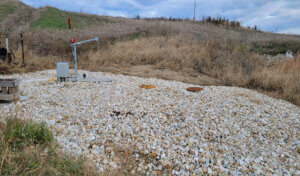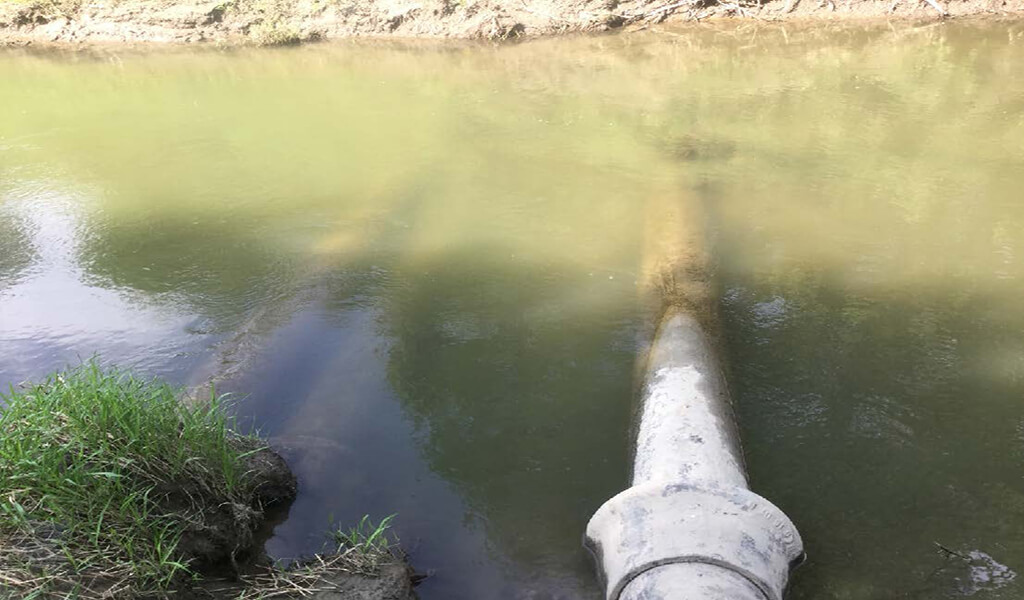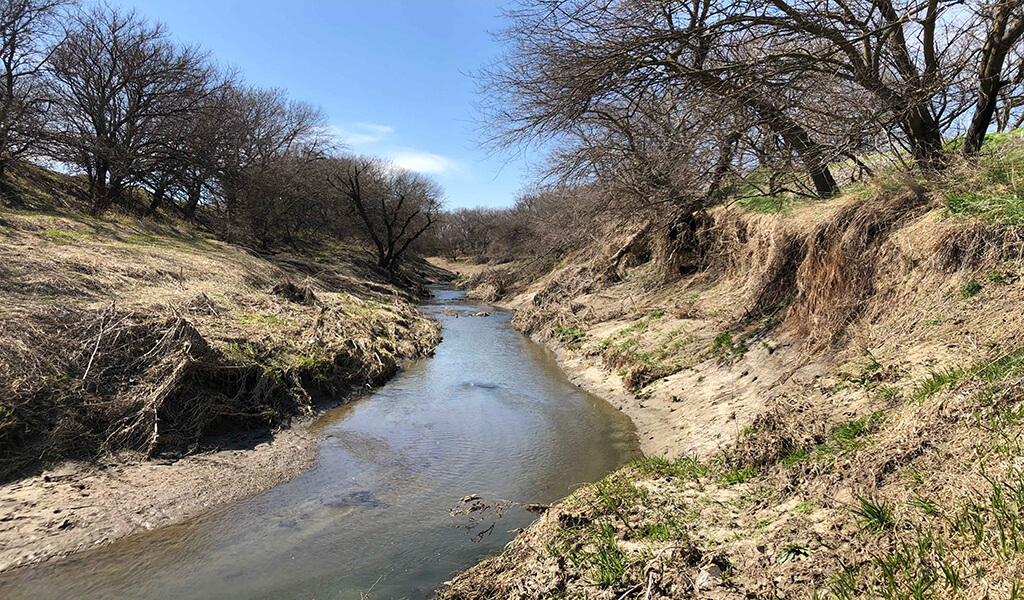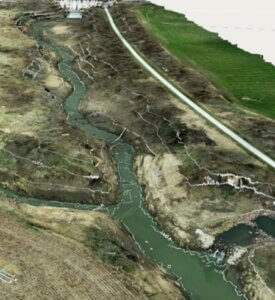
Papillion Creek Siphon Replacement
In March 2019, the City of Omaha faced a significant threat to its critical infrastructure under West Papillion Creek (known to locals as Papio Creek). A disastrous storm event, marked by heavy rainfall, snowmelt, and frozen ground unable to absorb precipitation, led to severe scouring of the stream bank and channel adjacent to the sanitary siphon crossing. This exposed the existing siphon, constructed in the 1970s, which consisted of one 12-inch primary and two 16-inch secondary/tertiary cast iron pipes. Constructed initially under 5 feet of fill, the siphon exhibited 2-3 feet of undercutting.
The consequences of a potential break in this aging infrastructure were alarming: a loss of service to approximately 26,000 residential and commercial customers and the risk of an illicit discharge of untreated wastewater into nearby waters. In response to this imminent threat, the City of Omaha turned to Snyder & Associates for a solution, tasking them with designing improvements to the sanitary sewer and streambank.
Hazard Mitigation Grant Program (HMGP) Funding
As the issue at hand was intricately linked to a disaster, it rendered the project eligible for the Hazard Mitigation Grant Program (HMGP). This presented a crucial lifeline and chance to address the immediate problem and proactively engage in hazard mitigation.
With a firm commitment to fortifying our community against future challenges, we thoroughly completed the Federal Emergency Management Agency (FEMA) funding application. Beyond that crucial step, our involvement extended to essential assistance in securing funding and administering the grant throughout the project. This dual role, from application to grant administration, underscores our dedication to recovery and building a more resilient foundation for the future.
Stream Corridor Survey & Comprehensive Assessment
The project began with a comprehensive assessment of existing conditions and elevations using Snyder-operated drone technology. This invaluable tool allowed the team to survey the stream corridor efficiently, providing essential data for the subsequent design phase.
Recognizing the need to realign the upstream gravity sewer and siphon crossing away from the eroded stream bank, concepts were developed based on the information our experts gathered.
The stream bank in the affected area presented a challenging opportunity, characterized by excessively steep 1:1 slopes with nearly 40 feet of vertical drop in some places. To safeguard against future scouring and channel degradation, the design incorporated rock check dams and bank stabilization practices upstream and downstream of the sewer crossing. However, the project’s core lay in redesigning the siphon system.
Redesigning the Siphon System
The siphon design featured three barrels for flow conveyance: a primary pipe for dry weather, a secondary pipe for elevated expected daily flows, and a tertiary pipe for peak flow activity associated with rainfall. An additional complication arose from limited elevation differences between the upstream and downstream connecting sewers. To address this, Snyder & Associates utilized hydraulic modeling software to iterate through various pipe sizes and head conditions, ensuring optimal velocities through the system.
We also considered the potential odors commonly associated with such facilities, knowing future development is planned in the vicinity. The chosen solution comprised one 10-inch and two 16-inch HDPE ductile iron pipes, carefully selected through a detailed design process. This ensured the pipes’ thickness could withstand external forces and pull stresses during installation, providing a robust and lasting solution.
The new pipe was also designed to be 10 feet below the existing channel bottom. This decision reflects a proactive approach to address potential future challenges, specifically erosion. By incorporating this design element, the project focuses on immediate needs and strategically anticipates and mitigates potential risks. This forward-thinking measure serves as a preventive step to ensure the longevity and stability of the infrastructure, demonstrating a commitment to long-term resilience and sustainability.
Environmental Assessment & Stream Rehabilitation
Due to the substantial impact on the streambank anticipated with this project, FEMA mandated the completion of an environmental assessment. Our environmental team collaborated closely with project stakeholders to develop a comprehensive plan comprising three stream restoration sections. This plan incorporated the strategic placement of rock riffles just before the newly buried pipe location and hard armor erosion control measures along the streambanks.
These riffles and added streambank support mitigated construction impacts and served as proactive defenses against potential erosion, addressing environmental concerns thoughtfully and proactively.
Building Resilience through Innovative Technologies & Strategic Design Solutions
The collaboration between the City of Omaha and Snyder & Associates is a testament to the importance of proactive infrastructure management. By leveraging innovative technologies, such as drone surveys and hydraulic modeling, and implementing strategic design solutions, the project successfully protected critical infrastructure, ensuring the continued provision of sanitary services to thousands of residents and businesses. This project strengthens the city’s resilience in the face of environmental challenges and serves as a model for other municipalities grappling with aging infrastructure and evolving climatic conditions.



